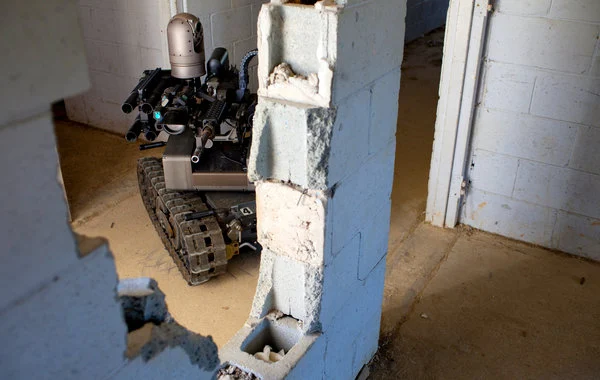Weapons have come a long way since the bow and arrow was considered the height of military technology. They’ve become more powerful, stronger, and now, smarter.
One of the smart weapons the military is not only hoping to deploy, but also employ, are robots.
Designed to shoot at targets or to stay up all night securing borders, the military is looking towards robots to replace human soldiers both in the air and on the ground.

With unmanned drones flying planes and on-ground militia in the form of robots in testing stages, this technology is closer than you may think.
While military testing takes place at the Army’s training school, developers note that there are certain qualities that robot have that make them superior to human soldiers.
Although robots do not have the ability to make some of the strategic decisions that human soldiers can, there are some features that stand out when talking about artificial intelligence.
One of these features is a robot’s “persistent stare.” Since a robot has no need to blink, the robot can be “eyes open” 24/7, giving them the ability to detect even the smallest motion.
Another feature that stands out is the lack of human emotion, like panic, in siege situations.
Unmanned aircraft are already being used in Iraq and Afghanistan with the use of over 6,000 tele-operated robots to search vehicles and checkpoints and to disarm enemy weapons, the I.E.D., or improvised explosive device.
Moving forward, it’s the Pentagon’s goal to make one-third of the ground combat vehicles remotely operated by 2015 – i Including the piece de resistance, Lockheed Martin’s futuristic wagonlike device that can carry over 1,000 pounds of gear and automatically follow a platoon.

An even cooler device is a walking robot, nicknamed the Big Dog, to walk on its own and carry gear.
The major barrier to adoption is the lack of immediate risk to the people that control the robots.
Without fear of physical harm, there is worry that having robot infantry will make nations “trigger-happy” and potentially lead to a new “technological arms race.”
“Wars will be started very easily and with minimal costs” as automation increases, predicted Wendell Wallach, a scholar at the Yale Interdisciplinary Center for Bioethics and chairman of its technology and ethics study group.
Another downside to a robotic infantry may be the inability to distinguish between civilians and enemy forces. An embodiment of this dilemma arose earlier this year when unmanned Predator aircraft caused serious collateral damage in Iraq and Afghanistan, which prompted major opposition to these remotely controlled devices.
“A lot of people fear artificial intelligence,” said John Arquilla, executive director of the Information Operations Center at the Naval Postgraduate School.
“[But] I will stand my artificial intelligence against your human any day of the week and tell you that my A.I. will pay more attention to the rules of engagement and create fewer ethical lapses than a human force.”
Regardless of pros and cons, there is no denying that unmanned military technology and robots are indeed the future of weaponry.
Kind of like the nuclear arms race of the 1940s, this technological race represents a scramble towards getting effective robotic technology on the ground level before enemy nations do.
Obviously, maintaining a dialogue between supporters and the opposition will be key in implementing robots into the military.
(Via NY Times)






